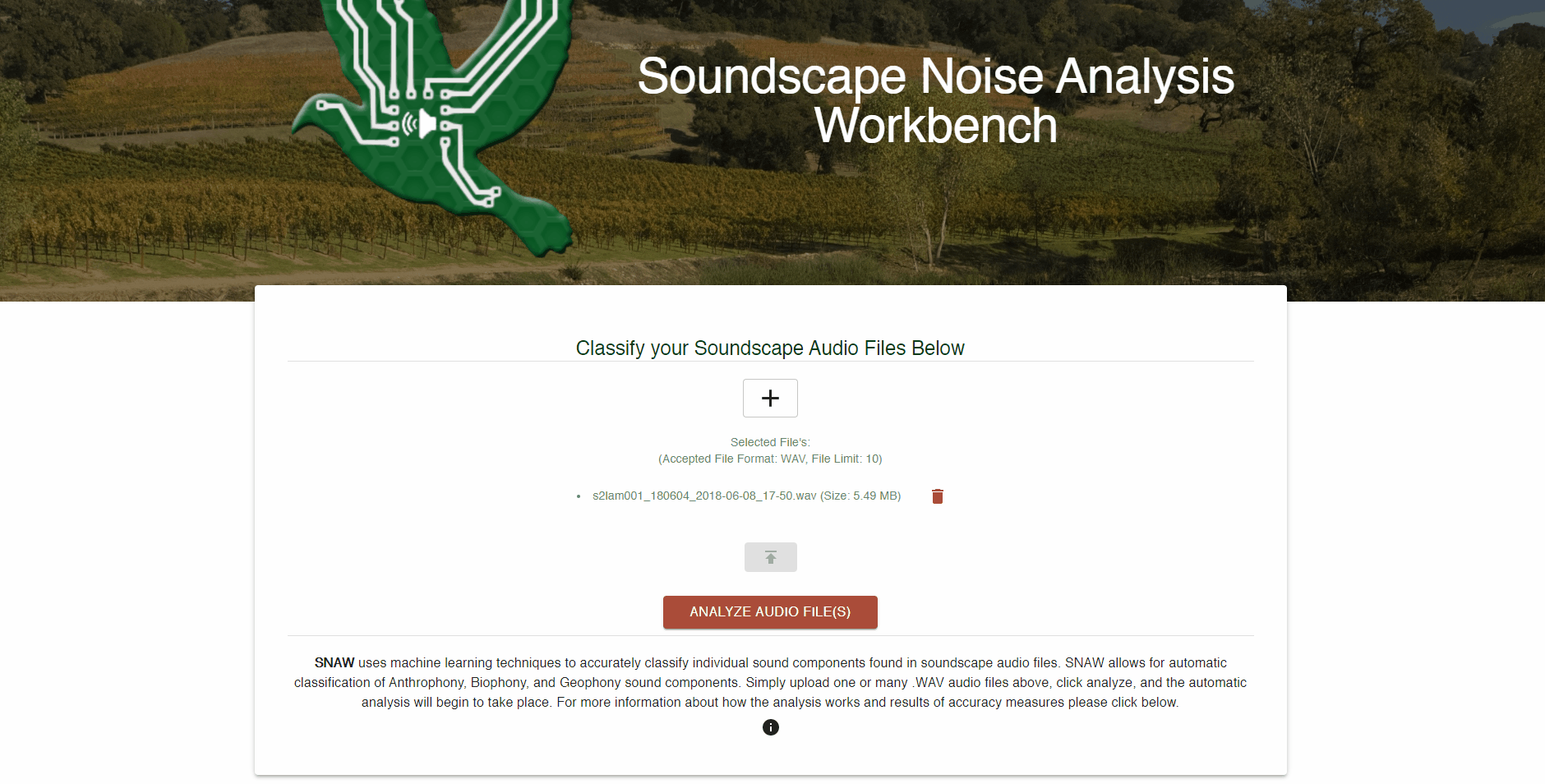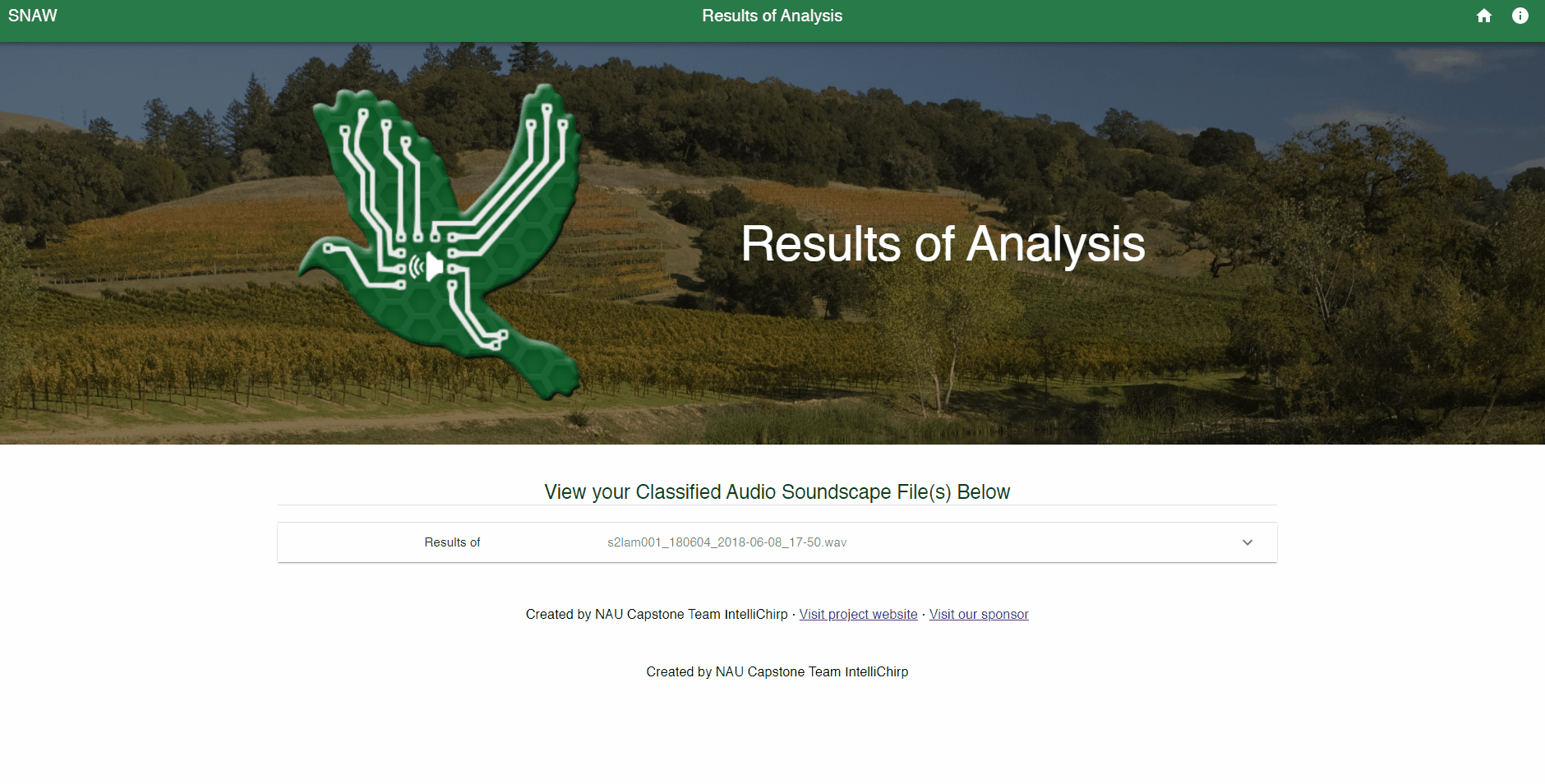Various environmental changes affect a range of species around the world and as more species are being affected, proper management and observation are required to understand their response. Traditional field methods require trained observers to determine species presence/absence and are thus expensive and challenging to employ at large scales. Using sound to monitor biodiversity across landscapes is a fairly recent development.
Our clients are working with Soundscapes2Landscapes. They are having a problem with an un-user friendly application that requires manual identification in terabytes of sound files. This manual approach is incredibly time consuming and needs to be automated. We feel confident that we can provide a solution that is user friendly and automates that identification process with machine learning.
Our envisioned solution is a user friendly web application for use by any researcher or citizen scientist. This application is called the Soundscape Noise Analysis Workbench (S.N.A.W.), and will allow users to analyze sound files with the power of machine learning. The results given to the users include a summary of the audio components in the file, acoustic indices, and an export of the sound file with background noise masked out. Users will gain a better understanding of how various sources of noise in soundscape recordings diminish the ability to detect individual bird species and quantify avian diversity. Using machine learning, instead of the current manual identification process, will drastically speed up the identification of terabytes of acoustic data. This solution will allow users anywhere, anytime, to upload their soundscapes for noise analysis, quickly.
Install Python (version 3.7.4) from: https://www.python.org/downloads/release/python-374/2.
Make sure Pip is up-to-date. Run command:
py -m pip install --upgrade pip
Navigate to the directory where you would like to install the virtual environment. Run command:
py -m venv snaw
(change ‘snaw’ to what you would like to name the virtual environment).
Activate the environment by navigating to the file directory of your environment and running command
.\Scripts\activate
Verify that the virtual environment is running by looking on the left hand side of the bottom line. You should see the name of your virtual environment in parenthesis (Ex:(snaw) C:......)7. Visit SNAW’s ‘Installation_Requirements’ repository at: https://github.com/intelliChirp/Installation_Requirements .
Click the green ‘Clone or download’ button.
Click on ‘Download ZIP’.
Copy requirements.txt file to your virtual environment directory.
Navigate to your virtual environment’s directory. Type the command:
pip install -r requirements.txt
Wait for the packages to install on your local machine
Click on the green ‘Clone or download’ button.
With a terminal open, navigate to the file directory of your Python virtual environment.
Activate the virtual environment by running
\Scripts\activate
Navigate to the web application’s repository on your local machine.
Navigate to /SNAW/snaw-frontend
Type the commands:
npm install
npm run build
This will install all needed packages for this application.
Navigate to the file directory /SNAW/snaw-backend
Type the command
py api.py
This will start the server on your machine. The last line printed to the terminal should show:‘Running on [URL-PATH] (Press CTRL+C to quit)’
Open a web browser, and paste the URL path into a browsers address bar.
You should now be at the homepage of SNAW
Here are a couple screenshots from our demo.
- Steven Enriquez - Team Lead, Front-End Lead - GitHub
- Michael Ewers - Back-End Lead - GitHub
- Joshua Kruse - Machine Learning Lead - GitHub
- Zhenyu Liei - Testing Lead - GitHub
- Colin Quinn. - Client
- Patrick Burns. - Client
School of Informatics, Computing and Cyber Systems Global Earth Observation and Dynamics of Ecosystems Lab
- Soundscapes 2 Landscapes - Website



